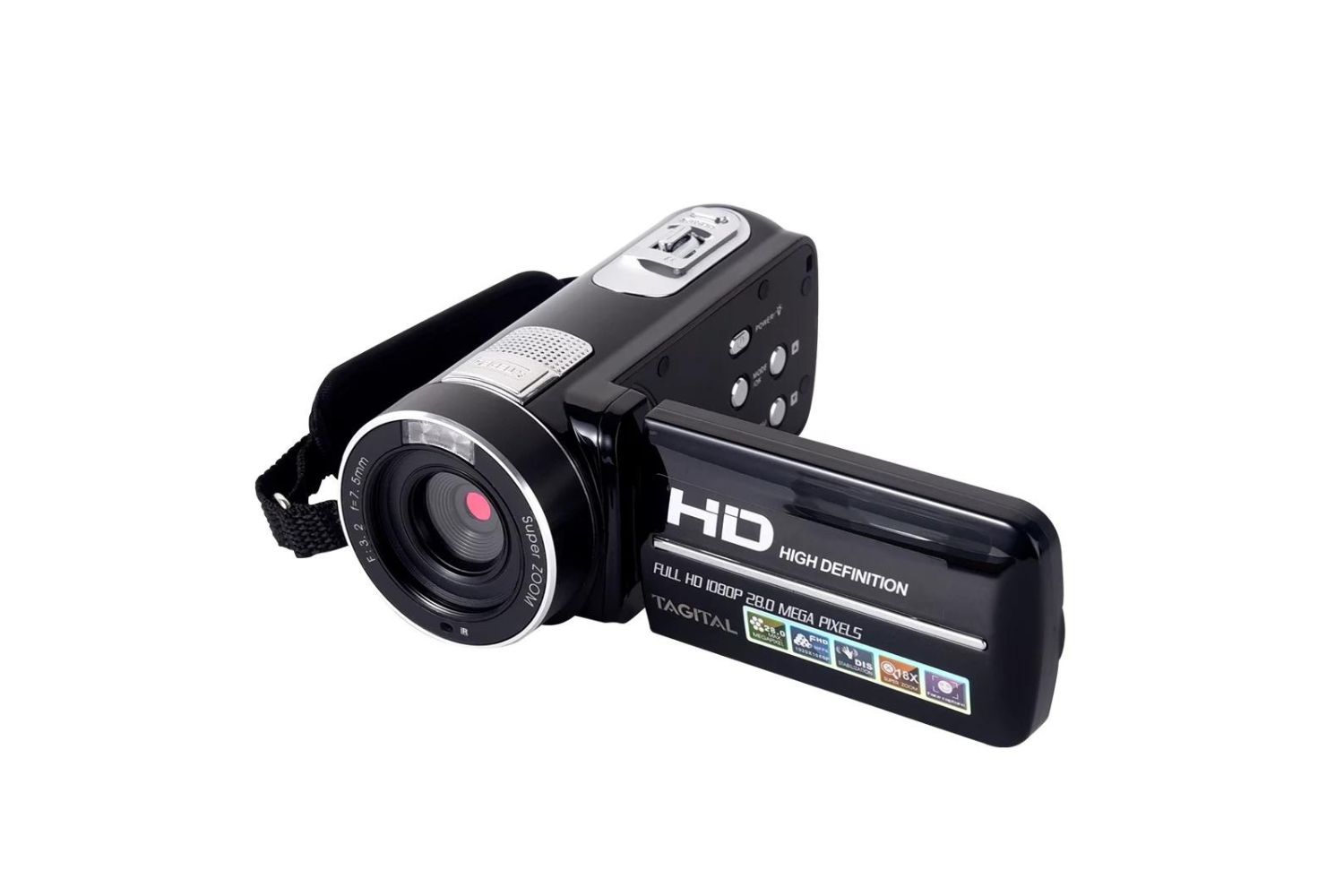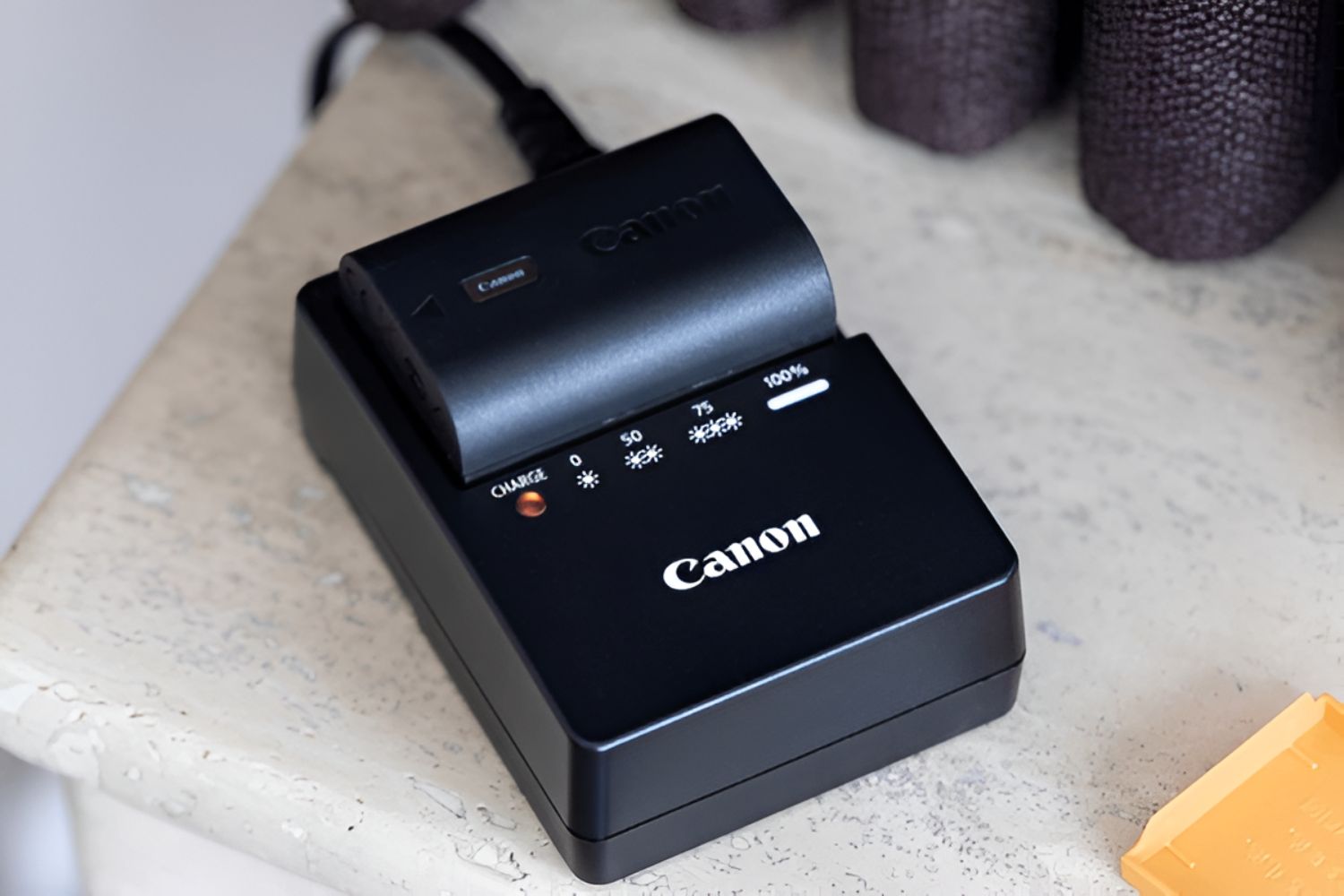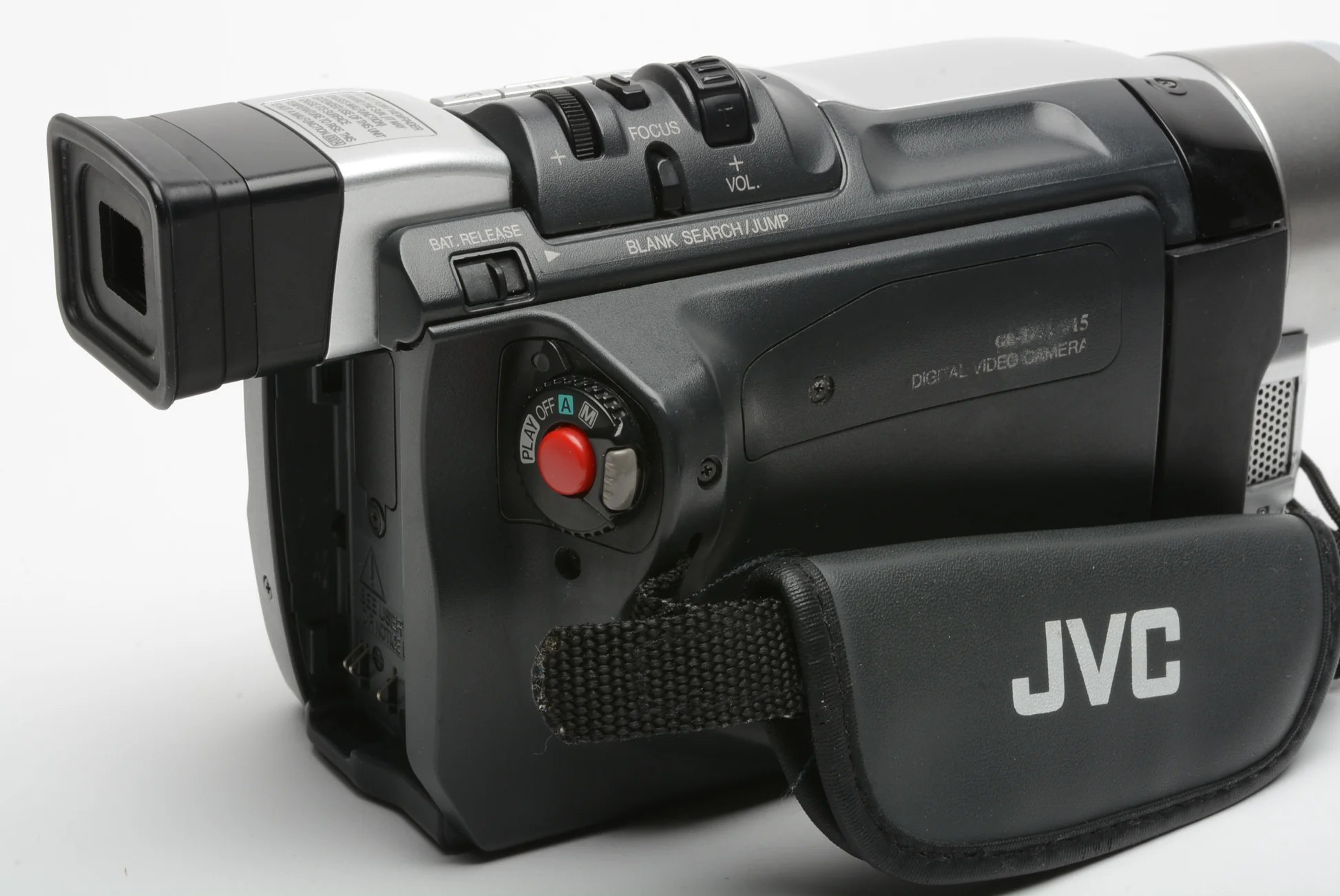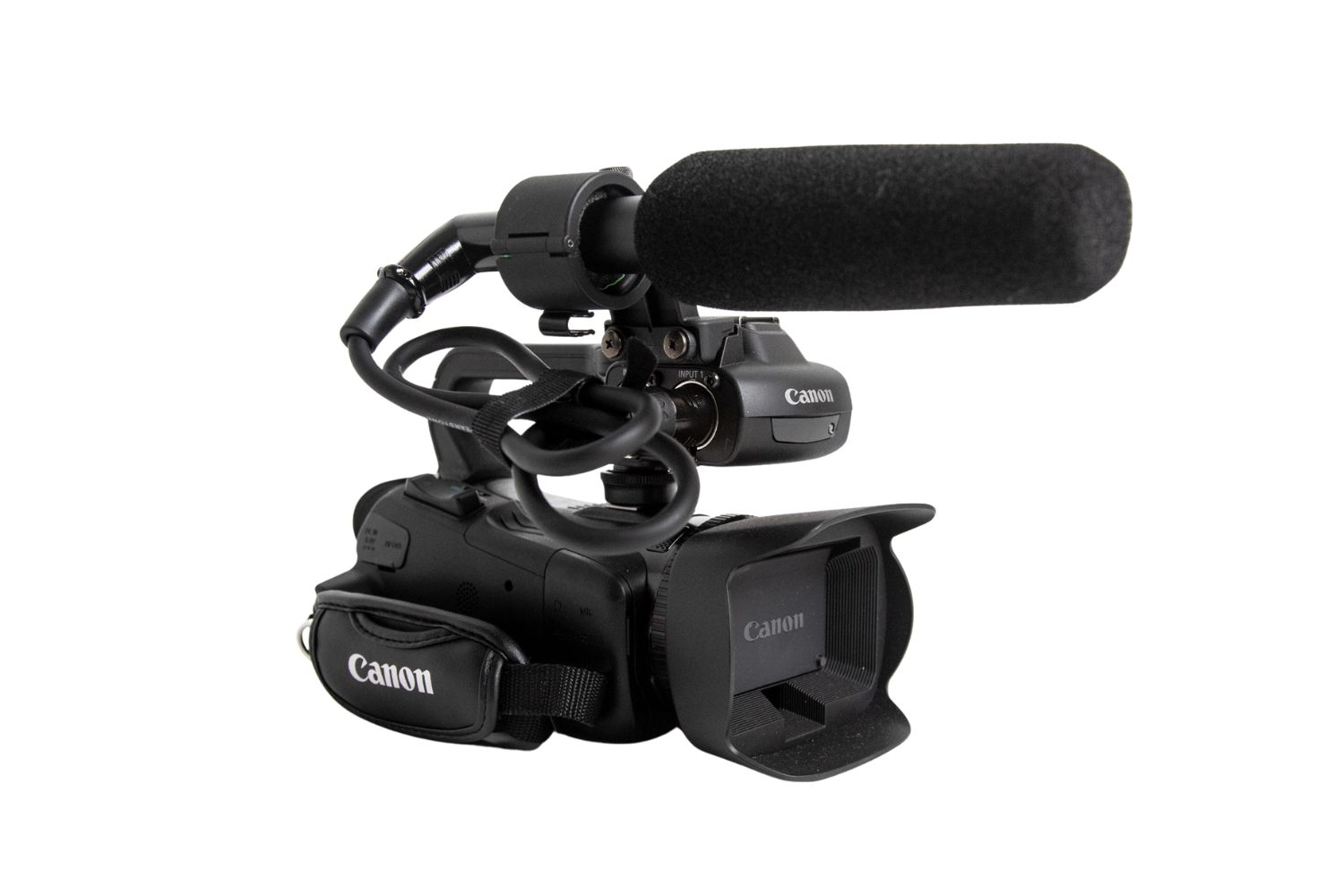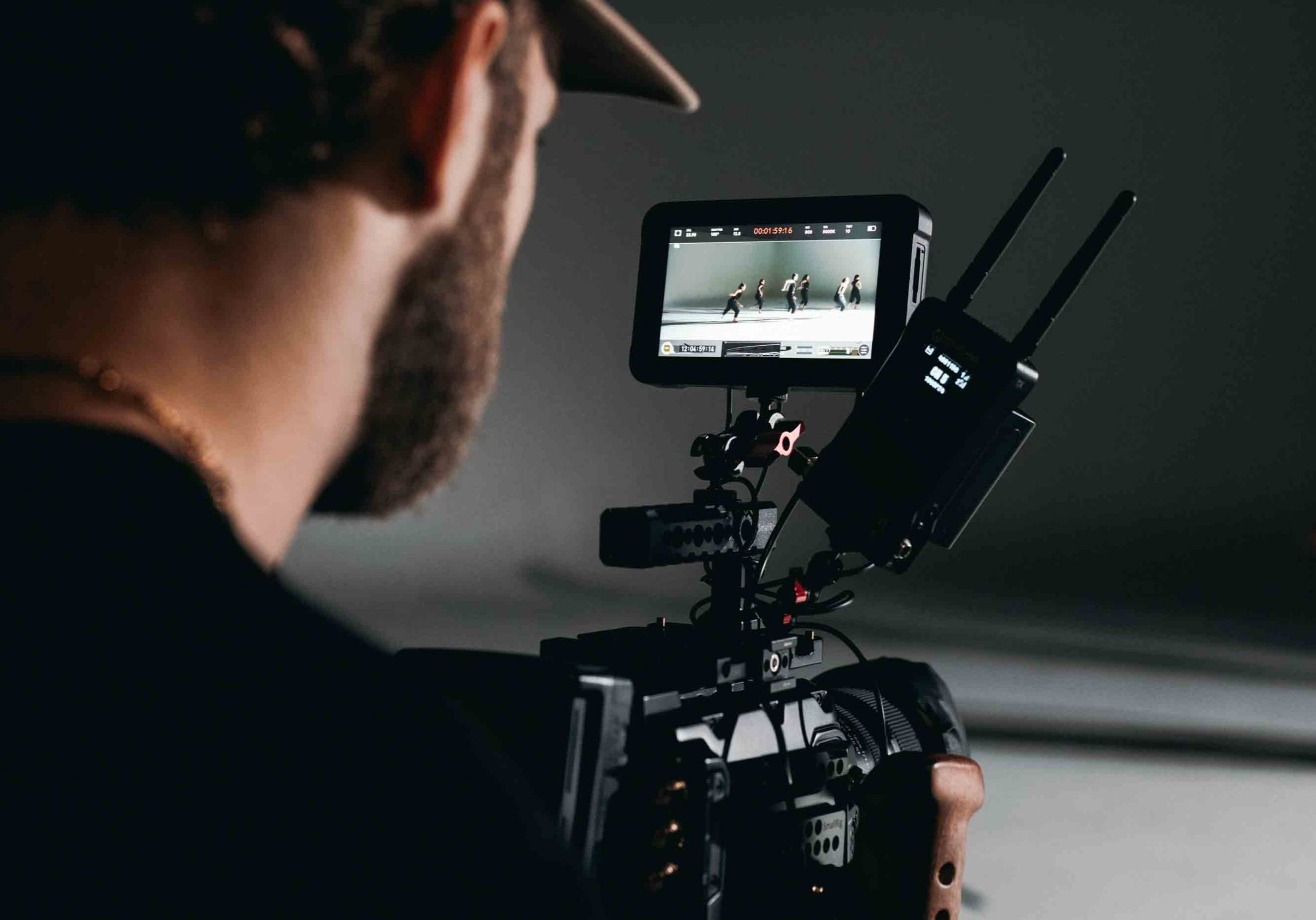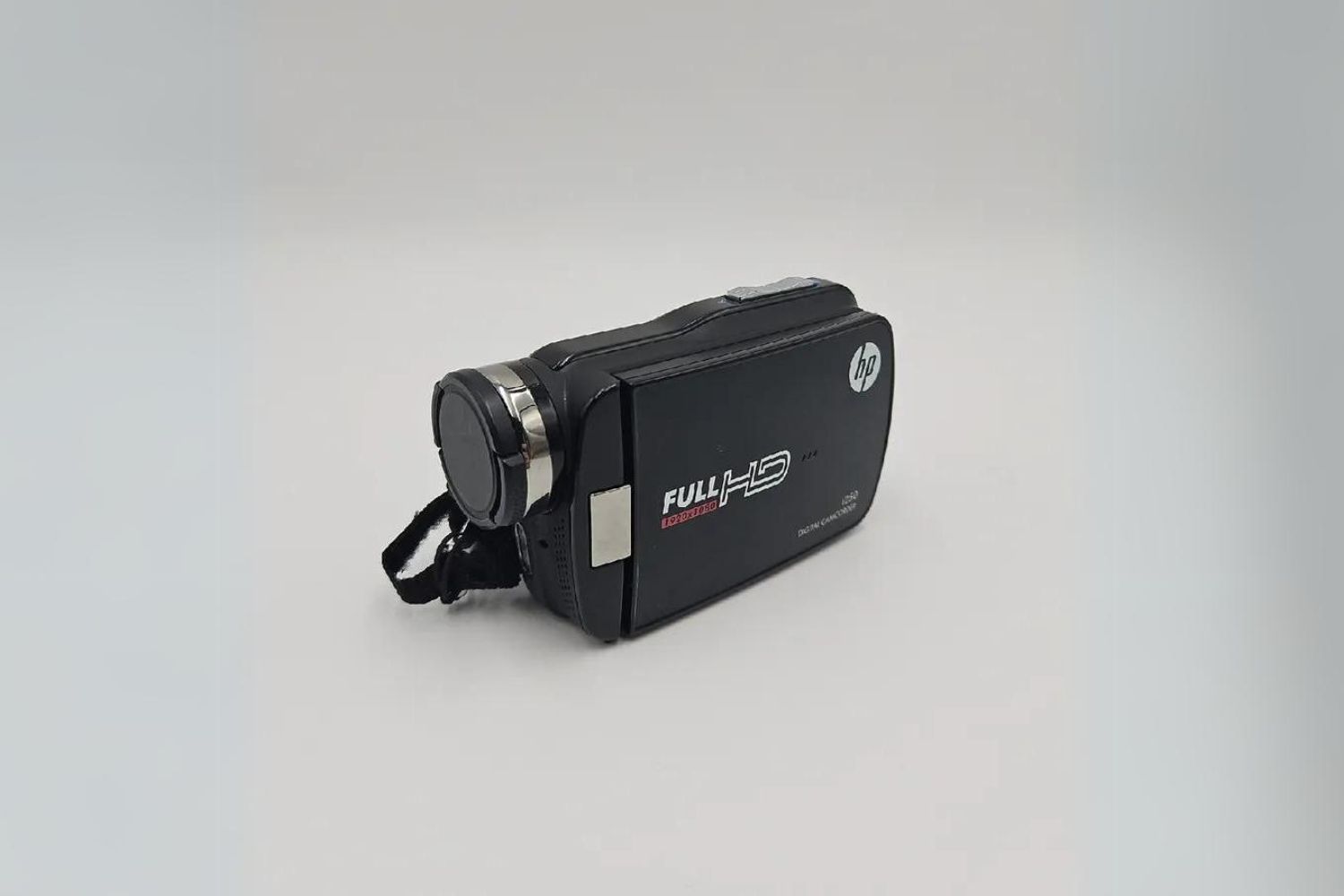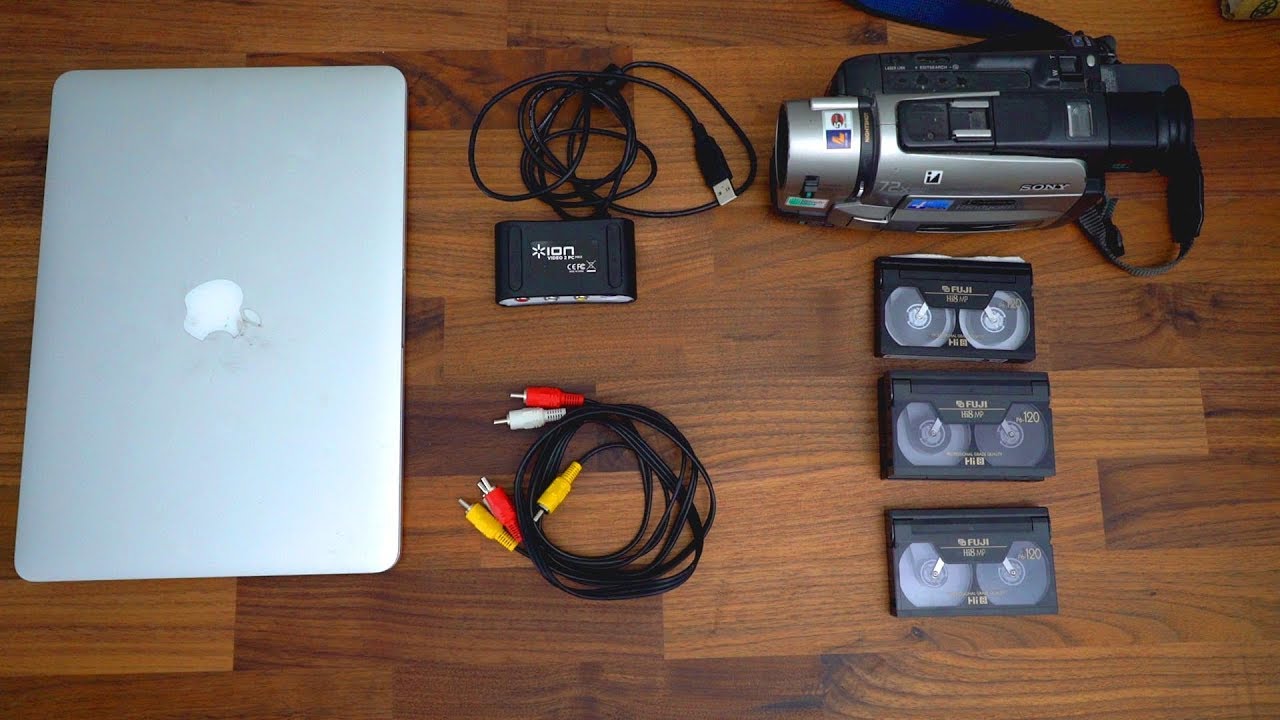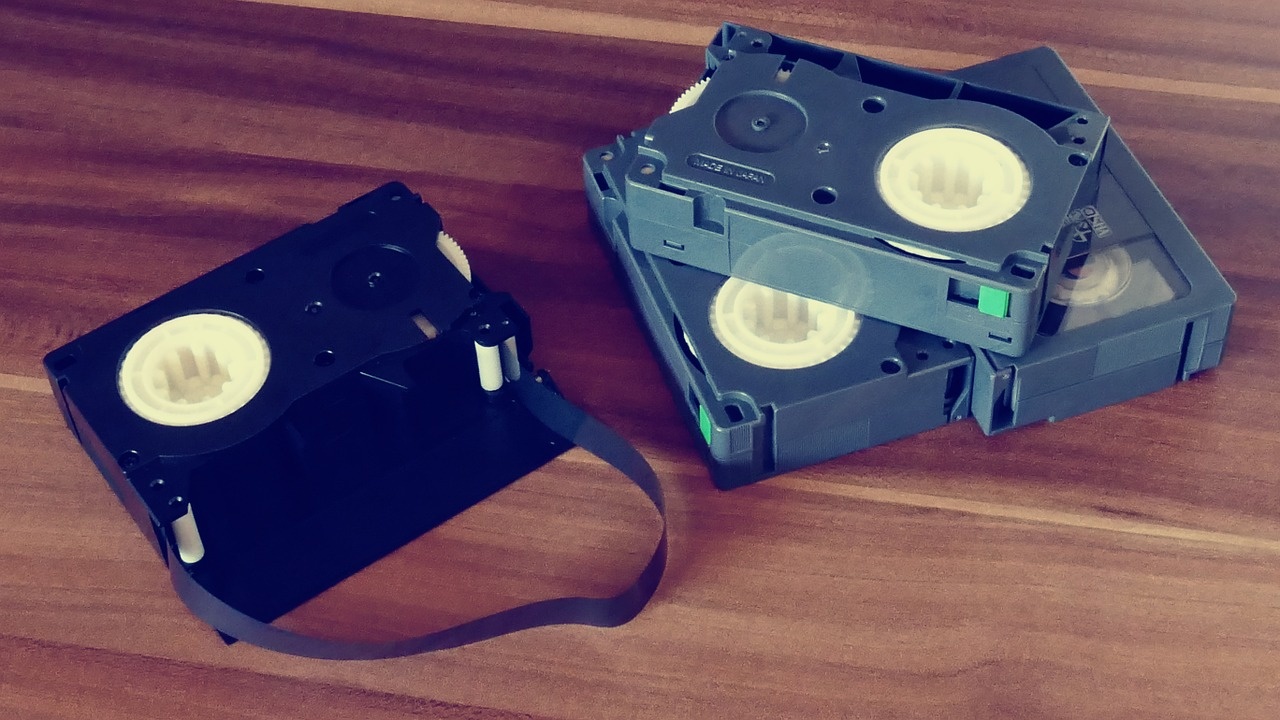Introduction
Are you ready to capture life's precious moments in stunning detail and vivid color? Choosing the right digital camcorder can elevate your videography to new heights. Whether you're an aspiring filmmaker, a travel enthusiast, or a proud parent wanting to document every milestone, selecting the perfect camcorder is essential. With a multitude of options available, it's crucial to understand your specific needs, budget constraints, and the features that will best suit your filming style.
In this comprehensive guide, we will delve into the key factors to consider when choosing a digital camcorder. From video and audio quality to image stabilization, zoom range, low-light performance, battery life, storage options, size, weight, and essential accessories, we'll cover everything you need to know to make an informed decision. By the end of this journey, you'll be equipped with the knowledge to select a digital camcorder that aligns perfectly with your videography aspirations.
Let's embark on this exciting exploration of digital camcorders, where we'll unravel the intricacies of these remarkable devices and empower you to make a confident and well-informed choice. Whether you're a novice or a seasoned videographer, this guide will serve as your compass in navigating the vast sea of digital camcorders, ensuring that you find the perfect match for your filming endeavors. So, grab your popcorn and get ready to embark on this enlightening journey into the world of digital camcorders!
Understanding Your Needs
Before diving into the intricate details of digital camcorders, it’s essential to introspect and identify your specific requirements. Understanding your needs is the foundational step in the journey of selecting the ideal camcorder that complements your unique filming style and aspirations.
Consider the type of videos you intend to create. Are you primarily capturing family events and vacations, or do you aspire to produce professional-quality documentaries or vlogs? The intended use of the camcorder will greatly influence the features and specifications you should prioritize. Additionally, think about the environments in which you’ll be filming. Will you predominantly shoot outdoors, in low-light conditions, or in controlled studio settings?
Furthermore, assess your level of expertise and familiarity with videography equipment. Are you a novice seeking user-friendly features, or do you possess advanced technical skills and require a camcorder with extensive manual controls and customizable settings?
Another crucial aspect to consider is the portability and ergonomics of the camcorder. Will you be frequently on the move, necessitating a lightweight and compact device, or will you primarily shoot in stationary settings where size and weight are less critical?
By meticulously evaluating these factors, you’ll gain clarity on the specific attributes your ideal camcorder should encompass. This understanding will serve as a guiding light as you navigate through the multitude of options available in the market, ensuring that the camcorder you ultimately select seamlessly aligns with your unique needs and preferences.
Budget Considerations
When embarking on the quest for the perfect digital camcorder, it’s imperative to establish a clear budget that aligns with your financial constraints and long-term filming goals. The wide array of camcorder options spans a broad price spectrum, ranging from budget-friendly models to high-end professional-grade equipment. Understanding your budgetary limitations will narrow down the available choices and prevent overspending on features that may exceed your current needs.
Consider the long-term investment value of the camcorder. If videography is a passion you intend to pursue fervently, allocating a higher budget for a durable, feature-rich camcorder may be a prudent decision. Conversely, if you’re an occasional videographer or exploring the hobby for the first time, a more budget-conscious approach may be suitable.
It’s essential to weigh the cost against the features offered by various camcorders. While higher-priced models may boast advanced functionalities and superior build quality, there are often budget-friendly options that deliver impressive performance and cater to the needs of amateur videographers.
Additionally, factor in potential ancillary expenses such as additional batteries, memory cards, external microphones, and carrying cases when outlining your budget. These accessories are essential for enhancing the functionality and convenience of your camcorder, and allocating a portion of your budget to accommodate them is wise.
By establishing a clear budget and conducting thorough research on the available options within your financial scope, you’ll approach the selection process with confidence and fiscal prudence. Your budget considerations will serve as a guiding framework, ensuring that the camcorder you ultimately choose not only fulfills your videography aspirations but also represents a sound investment in your creative endeavors.
Features to Look For
As you venture into the realm of digital camcorders, an understanding of the essential features to look for will empower you to make an informed and astute choice. The diverse array of available features caters to a wide spectrum of videography styles and requirements, ensuring that there’s a camcorder tailored to suit your specific needs.
One of the pivotal features to consider is the resolution and frame rate capabilities of the camcorder. High-definition (HD) and 4K resolutions have become the industry standard, offering unparalleled clarity and detail in video recordings. Additionally, a higher frame rate facilitates smooth and cinematic motion capture, making it a desirable attribute for capturing fast-paced action or creating slow-motion effects.
Another crucial feature is the presence of manual controls, allowing for personalized adjustments to exposure, focus, and audio levels. For videographers seeking creative control and precision in their recordings, the availability of manual settings is paramount.
Furthermore, the presence of a versatile and responsive autofocus system is invaluable, particularly for capturing dynamic subjects or fast-paced scenes. A reliable autofocus mechanism ensures that your footage remains sharp and clear, even in challenging shooting conditions.
Consider the connectivity options offered by the camcorder. Wi-Fi and Bluetooth capabilities facilitate seamless file transfers, remote operation, and integration with compatible accessories and devices, enhancing the versatility and convenience of the camcorder.
Audio quality is equally significant. Look for camcorders with built-in or external microphone connectivity, as well as features such as wind noise reduction and manual audio level controls. Crisp and clear audio is essential for immersive and professional-quality video production.
Finally, assess the durability and build quality of the camcorder. A robust construction and weather-sealed design are advantageous for videographers who frequently operate in challenging or outdoor environments, ensuring that the camcorder can withstand varying conditions without compromising performance.
By prioritizing these features and aligning them with your specific videography requirements, you’ll be equipped to select a camcorder that not only meets but exceeds your expectations, elevating the quality and creativity of your video productions.
Video Quality
When evaluating digital camcorders, one of the paramount considerations is the video quality they can deliver. The resolution of the recorded footage plays a pivotal role in capturing the finest details and rendering lifelike visuals. High-definition (HD) and 4K resolutions have become standard offerings in modern camcorders, providing exceptional clarity and sharpness that enhance the viewing experience.
Opting for a camcorder with 4K capability ensures that your videos are future-proofed, ready to be enjoyed on the latest high-resolution displays and devices. The heightened level of detail and realism offered by 4K resolution elevates the visual impact of your recordings, making it an appealing choice for videographers aiming for professional-grade results.
Frame rate is another critical aspect of video quality. A higher frame rate enables smooth and fluid motion capture, ideal for recording fast-paced action, sports, or creating cinematic slow-motion effects. The ability to shoot at varying frame rates provides versatility in storytelling and visual expression, allowing you to tailor the look and feel of your videos to suit different subjects and moods.
Consider the dynamic range and color depth capabilities of the camcorder. Enhanced dynamic range preserves intricate details in both shadow and highlight areas, resulting in a more nuanced and visually captivating image. Similarly, a broader color depth facilitates vibrant and accurate color reproduction, contributing to the overall richness and realism of the recorded footage.
Furthermore, the presence of advanced image processing technologies, such as optical image stabilization and noise reduction algorithms, significantly impacts the video quality. Optical image stabilization minimizes unwanted camera shake, ensuring steady and professional-looking footage, while noise reduction algorithms enhance the clarity and cleanliness of the video, particularly in low-light conditions.
By prioritizing video quality in your selection of a digital camcorder, you’ll ensure that your recordings exude a level of visual excellence that captivates and resonates with your audience. The seamless combination of high-resolution imagery, fluid motion, vibrant colors, and refined image processing will elevate the storytelling potential and cinematic allure of your video productions.
Audio Quality
While video quality is undeniably crucial, the significance of audio quality in video production cannot be overstated. A digital camcorder’s audio capabilities play a pivotal role in enhancing the immersive and professional appeal of your recordings. When evaluating a camcorder, consider the audio features and functionalities that contribute to capturing clear, nuanced, and high-fidelity sound.
One of the fundamental aspects of audio quality is the presence of built-in or external microphone connectivity. The ability to connect an external microphone provides greater flexibility and control over the audio recording process, allowing you to capture pristine sound in diverse shooting scenarios. Additionally, camcorders equipped with manual audio level controls enable precise adjustment of recording volumes, ensuring optimal sound capture without distortion or clipping.
Wind noise reduction is another valuable feature, particularly for outdoor videography. This technology minimizes the intrusive effects of wind on audio recordings, preserving the clarity and intelligibility of dialogue and ambient sounds. Additionally, the inclusion of a high-quality internal microphone with advanced noise-canceling capabilities enhances the camcorder’s standalone audio recording performance, catering to situations where external microphones may not be feasible.
Furthermore, the presence of audio monitoring options, such as headphone jacks and on-screen audio level displays, empowers videographers to monitor and adjust audio settings in real time, ensuring that the sound is captured with precision and fidelity. The ability to monitor audio levels and quality during recording is invaluable for maintaining consistent and professional sound throughout the filming process.
Consider the camcorder’s compatibility with external audio recording devices, such as portable recorders or wireless microphone systems. Seamless integration with external audio sources expands the creative possibilities and versatility of sound capture, allowing for multi-channel recording, wireless mobility, and enhanced audio fidelity.
By prioritizing audio quality in your selection of a digital camcorder, you’ll ensure that your videos are not only visually captivating but also sonically immersive. The seamless integration of high-quality audio recording capabilities elevates the overall production value of your videos, creating a truly engaging and impactful viewing experience for your audience.
Image Stabilization
Image stabilization is a critical feature to consider when evaluating digital camcorders, as it directly impacts the visual quality and professionalism of your video recordings. The primary function of image stabilization is to mitigate the effects of camera shake and motion, resulting in steady, smooth, and visually appealing footage, particularly in dynamic or handheld shooting scenarios.
There are various types of image stabilization technologies employed in modern camcorders, each offering unique advantages in different shooting conditions. Optical image stabilization (OIS) utilizes physical lens adjustments to counteract camera movement, effectively reducing blurring and maintaining image clarity. OIS is particularly effective for handheld and walking shots, providing a noticeable improvement in video stability.
In addition to OIS, some camcorders feature electronic image stabilization (EIS), which utilizes digital processing to compensate for camera shake. EIS is valuable for capturing stable footage in situations where physical lens adjustments may be limited, such as when using long zoom ranges or filming in challenging environments.
Advanced camcorders may incorporate hybrid image stabilization, combining the strengths of both OIS and EIS to deliver exceptional stability and smoothness in a wide range of shooting conditions. Hybrid systems intelligently utilize both optical and digital stabilization methods to provide optimal performance, ensuring that your videos remain steady and clear, even during rapid movements or unpredictable actions.
For videographers engaged in action-oriented or sports videography, the presence of specialized stabilization modes, such as active or sport modes, can further enhance the effectiveness of image stabilization. These modes are designed to accommodate swift movements and dynamic subject tracking, ensuring that the footage remains steady and visually compelling, even in challenging shooting scenarios.
When assessing a camcorder’s image stabilization capabilities, consider the extent to which it can compensate for various types of motion, including walking, panning, and tilting. A robust image stabilization system should provide consistent and reliable stability across diverse shooting styles, enabling you to capture professional-quality footage with minimal effort and technical constraints.
By prioritizing image stabilization in your selection of a digital camcorder, you’ll ensure that your videos exude a level of visual polish and professionalism that captivates and resonates with your audience. The seamless integration of advanced stabilization technologies empowers you to capture steady, smooth, and visually stunning footage, enriching the storytelling potential and cinematic allure of your video productions.
Zoom Range
The zoom range of a digital camcorder is a pivotal consideration that directly influences the versatility and compositional flexibility of your video recordings. Understanding the capabilities and limitations of the zoom functionality empowers you to capture compelling visuals across a broad spectrum of shooting scenarios, ranging from expansive landscapes to intimate close-ups.
Camcorders typically feature two primary types of zoom: optical zoom and digital zoom. Optical zoom, which is the preferred method for achieving magnification without sacrificing image quality, utilizes the camcorder’s lens mechanism to optically adjust the focal length, resulting in magnified visuals while preserving sharpness and detail. The extent of optical zoom is expressed as a numerical ratio (e.g., 10x, 20x), indicating the degree of magnification relative to the camcorder’s base focal length.
Conversely, digital zoom employs software-based processing to digitally enlarge the captured image, effectively cropping and interpolating the visual data to simulate magnification. While digital zoom can extend the apparent reach of the camcorder, it often comes at the expense of image quality, as the process may introduce pixelation and loss of detail, particularly at higher magnification levels.
When evaluating a camcorder’s zoom range, consider the balance between optical and digital zoom capabilities. A robust optical zoom range provides genuine magnification and compositional flexibility without compromising image quality, allowing you to capture distant subjects with clarity and precision. Additionally, the presence of advanced optical zoom technologies, such as image-stabilized zoom lenses, enhances the usability and effectiveness of the zoom functionality, particularly in handheld or dynamic shooting scenarios.
Furthermore, assess the camcorder’s wide-angle capabilities, which determine the breadth of the captured scene at the minimum zoom setting. A generous wide-angle perspective is advantageous for encompassing expansive landscapes, group shots, and immersive environmental compositions, adding depth and context to your videos while minimizing the need for frequent zoom adjustments.
Consider the specific shooting scenarios and subjects you anticipate capturing, and evaluate the camcorder’s zoom range in relation to these requirements. Whether you’re documenting wildlife, sports events, or family gatherings, a well-balanced and versatile zoom range equips you to adapt to diverse visual narratives and capture compelling footage with ease and precision.
By prioritizing a camcorder with an optimal zoom range, you’ll unlock a world of creative possibilities, allowing you to compose visually captivating scenes and bring distant subjects into clear focus. The seamless integration of versatile zoom capabilities enriches the storytelling potential and visual impact of your video productions, ensuring that every frame is imbued with depth, detail, and immersive allure.
Low-Light Performance
The low-light performance of a digital camcorder is a critical factor that significantly influences the quality and versatility of your video recordings, particularly in challenging or dimly lit environments. Evaluating a camcorder’s ability to capture clear, detailed, and visually compelling footage in low-light conditions is essential for videographers who frequently operate in indoor settings, evening events, or other scenarios with limited ambient illumination.
One of the key determinants of low-light performance is the camcorder’s sensor size and sensitivity. Larger sensors, particularly those found in professional-grade and high-end consumer camcorders, exhibit superior light-gathering capabilities, resulting in reduced noise, enhanced dynamic range, and improved image clarity in low-light settings. Additionally, sensors with higher native ISO ranges offer greater flexibility in adjusting exposure levels without compromising image quality, allowing for well-exposed footage even in challenging lighting conditions.
The presence of advanced low-light shooting modes and technologies further enhances a camcorder’s performance in dimly lit environments. Features such as low-light scene modes, extended ISO ranges, and noise reduction algorithms optimize the camcorder’s sensitivity and image processing, resulting in cleaner, more detailed footage with reduced noise and artifacts.
Consider the aperture range and capabilities of the camcorder’s lens. A wider maximum aperture (denoted by a lower f-number) allows more light to enter the lens, facilitating brighter and more vibrant low-light recordings. Camcorders equipped with fast lenses excel in capturing clear, atmospheric footage in dimly lit settings, providing a distinct advantage for videographers who frequently encounter challenging lighting conditions.
The effectiveness of the camcorder’s image stabilization system in low-light scenarios is also noteworthy. Reliable optical or electronic image stabilization minimizes the impact of camera shake and motion blur, ensuring that your low-light footage remains steady and visually compelling. Additionally, the presence of low-light-specific autofocus modes and technologies enhances the camcorder’s ability to acquire and maintain focus in dimly lit environments, facilitating sharp and precise subject capture even in challenging lighting conditions.
By prioritizing a camcorder with exceptional low-light performance, you’ll ensure that your videos maintain a high standard of visual quality and clarity, regardless of the ambient lighting conditions. The seamless integration of advanced sensor technology, low-light shooting modes, fast lenses, and effective image stabilization empowers you to capture atmospheric, immersive, and visually captivating footage in a diverse range of lighting environments, enriching the storytelling potential and cinematic allure of your video productions.
Battery Life
The battery life of a digital camcorder is a crucial consideration that directly impacts the usability, convenience, and reliability of the device during extended filming sessions. Assessing the camcorder’s battery performance and understanding its implications on your videography endeavors is essential for ensuring uninterrupted recording and minimizing the logistical challenges associated with frequent recharging or battery replacements.
When evaluating a camcorder’s battery life, consider the manufacturer’s specified battery duration under typical shooting conditions. This provides a baseline for understanding the expected operational time and facilitates comparisons between different camcorder models. Additionally, assess the availability of high-capacity or extended-life battery options, which can significantly prolong the camcorder’s operational endurance, particularly during prolonged filming sessions or when access to charging facilities is limited.
The efficiency and power consumption of the camcorder’s imaging and processing systems play a significant role in determining battery life. Advanced sensor technologies, high-resolution displays, and extensive processing capabilities may impact the camcorder’s power requirements, necessitating a balance between performance and energy efficiency to optimize battery longevity.
Consider the feasibility of carrying spare batteries or utilizing external power sources, such as portable battery packs or AC adapters, to supplement or extend the camcorder’s operational duration. The ability to seamlessly swap batteries or connect to external power sources enhances the camcorder’s versatility and adaptability, ensuring continuous recording without interruptions or downtime.
Furthermore, the presence of intelligent power management features, such as configurable auto-power-off timers, low-power modes, and battery level indicators, enhances the usability and predictability of the camcorder’s battery performance. These features empower videographers to monitor and optimize power usage, prolonging battery life and minimizing the risk of unexpected power depletion during critical filming moments.
Assess the compatibility of the camcorder with external battery charging solutions, such as rapid chargers or multi-battery charging stations. Efficient battery charging mechanisms expedite the recharging process and facilitate the maintenance of a reliable and readily available power supply, ensuring that the camcorder is always prepared for extended recording sessions.
By prioritizing a camcorder with robust battery life and efficient power management, you’ll minimize disruptions and logistical constraints, allowing you to focus on capturing compelling and immersive video content without the encumbrance of frequent battery changes or recharging. The seamless integration of long-lasting battery solutions and intelligent power management features enriches the usability and reliability of the camcorder, ensuring that your videography endeavors unfold with uninterrupted creativity and fluidity.
Storage Options
When selecting a digital camcorder, the available storage options play a pivotal role in determining the recording capacity, data management, and overall flexibility of the device. Understanding the diverse storage solutions and their implications on your videography workflow is essential for facilitating seamless recording, efficient data handling, and the preservation of your valuable video content.
One of the primary considerations in storage options is the type of media utilized for recording and storing video footage. Camcorders commonly employ removable storage media, such as SD cards, microSD cards, or proprietary memory cards, to capture and store video files. Assess the compatibility and expandability of the camcorder’s storage media, ensuring that it aligns with your anticipated recording duration and data transfer requirements.
Consider the storage capacity and data transfer speeds of the selected media format. High-capacity storage cards accommodate extended recording sessions and minimize the need for frequent card changes, particularly when capturing high-resolution or high-bitrate video formats. Additionally, fast data transfer speeds facilitate efficient offloading of video files to external storage devices or computing platforms, streamlining the post-production workflow and minimizing downtime between recording sessions.
Assess the camcorder’s compatibility with external storage solutions, such as portable hard drives, solid-state drives, or network-attached storage (NAS) devices. The ability to offload and archive video files onto external storage media enhances the camcorder’s operational flexibility and data management capabilities, ensuring that your video content remains secure, organized, and readily accessible for editing and distribution.
Furthermore, the presence of dual memory card slots or redundant recording capabilities enhances the reliability and data security of the camcorder, providing a failsafe mechanism for continuous recording and backup redundancy. Dual card slots allow for simultaneous recording to multiple media cards, providing peace of mind and safeguarding against data loss due to media failure or corruption.
Consider the compatibility of the camcorder’s storage format with your existing post-production workflow and editing software. Some camcorders utilize specific file formats or codecs that may require additional processing or transcoding, potentially impacting the efficiency and compatibility of your video editing and archival processes.
By prioritizing a camcorder with versatile and expandable storage options, you’ll ensure that your video content remains secure, accessible, and efficiently managed throughout the recording and post-production phases. The seamless integration of reliable storage solutions and data management capabilities empowers you to focus on the creative aspects of videography, knowing that your valuable video content is preserved and accessible for seamless editing, sharing, and archival.
Size and Weight
The size and weight of a digital camcorder are pivotal considerations that directly impact its portability, handling, and suitability for diverse videography scenarios. Evaluating the camcorder’s form factor and physical characteristics is essential for ensuring ergonomic comfort, operational convenience, and unencumbered mobility during filming sessions.
Assess the camcorder’s dimensions and weight in relation to your anticipated usage scenarios. A compact and lightweight camcorder is advantageous for handheld shooting, travel videography, and dynamic filming situations where mobility and agility are paramount. Conversely, larger and more robust camcorders may offer enhanced stability and handling for stationary or studio-based productions, catering to scenarios where size and weight are less critical.
Consider the ergonomics and handling features integrated into the camcorder’s design. Comfortable handgrips, intuitive control layouts, and well-balanced weight distribution enhance the camcorder’s usability and reduce operator fatigue during prolonged filming sessions. Additionally, the presence of adjustable viewfinders, articulating screens, and customizable control interfaces contributes to a tailored and user-centric filming experience, accommodating diverse shooting styles and preferences.
Assess the compatibility of the camcorder’s form factor with accessory integration, such as external microphones, lighting equipment, and stabilization rigs. A well-balanced and versatile camcorder design facilitates the seamless attachment and operation of essential accessories, enhancing the creative potential and professional capabilities of the device without compromising its portability or handling characteristics.
Furthermore, consider the impact of the camcorder’s size and weight on travel and transportation logistics. Compact and lightweight camcorders are conducive to on-the-go videography, ensuring that you can effortlessly carry and deploy the device in diverse shooting environments without being encumbered by excessive bulk or weight. Conversely, larger camcorders may offer enhanced stability and operational versatility, catering to studio or fixed-location productions where portability is less critical.
By prioritizing a camcorder with an optimal size and weight profile, you’ll ensure that your videography endeavors unfold with ease, comfort, and adaptability across diverse shooting scenarios. The seamless integration of ergonomic design, handling features, and accessory compatibility empowers you to focus on capturing compelling and immersive video content, knowing that the camcorder’s physical characteristics complement and enhance your creative vision without impeding operational fluidity or mobility.
Accessories
Accessories play a vital role in augmenting the functionality, creative potential, and operational versatility of a digital camcorder, empowering videographers to tailor their equipment to specific shooting scenarios and creative preferences. Evaluating the compatibility and utility of accessories is essential for enhancing the camcorder’s capabilities, expanding its creative horizons, and ensuring seamless integration with external devices and equipment.
One of the fundamental accessories to consider is an external microphone or audio recording device. High-quality audio is integral to immersive and professional video production, and an external microphone enables precise sound capture, noise reduction, and the enhancement of ambient audio, ensuring that your videos are accompanied by clear, nuanced, and impactful soundscapes.
Lighting accessories, such as on-camera LED lights or portable light panels, are invaluable for controlling and augmenting the visual ambience of your video recordings. These accessories facilitate enhanced subject illumination, balanced exposure, and creative lighting effects, ensuring that your videos exhibit visual clarity, depth, and professional polish across diverse shooting environments.
Stabilization equipment, including handheld gimbals, stabilizers, or tripods, significantly enhances the steadiness and fluidity of your video footage, particularly in dynamic or handheld shooting scenarios. These accessories minimize camera shake, enable smooth and cinematic motion capture, and provide a professional visual aesthetic that elevates the overall quality and impact of your video productions.
Consider the utility of power and charging accessories, such as high-capacity batteries, rapid chargers, and portable power banks, which ensure uninterrupted operational endurance and reliable power supply during extended filming sessions. Efficient power management and backup solutions minimize downtime and logistical constraints, allowing you to focus on capturing compelling video content without interruptions.
External storage devices, such as portable hard drives, solid-state drives, or memory card cases, facilitate efficient data management, offloading, and archival of video files. These accessories ensure that your video content remains secure, organized, and readily accessible for editing, sharing, and long-term storage, enhancing the professionalism and reliability of your videography workflow.
By prioritizing accessories that complement and enhance the capabilities of your camcorder, you’ll ensure that your videography endeavors unfold with creative freedom, operational flexibility, and professional polish. The seamless integration of high-quality audio, lighting, stabilization, power, and data management accessories enriches the storytelling potential and visual impact of your video productions, ensuring that every frame is imbued with clarity, depth, and immersive allure.
Conclusion
Choosing the perfect digital camcorder is a multifaceted endeavor that requires careful consideration of various factors to ensure that the selected device aligns seamlessly with your videography aspirations. By navigating through the intricacies of video and audio quality, image stabilization, zoom range, low-light performance, battery life, storage options, size and weight, and essential accessories, you gain a comprehensive understanding of the features and functionalities that contribute to a versatile, reliable, and creatively empowering camcorder.
Understanding your specific videography needs and the intended use of the camcorder serves as the compass guiding your selection process, ensuring that the chosen device harmonizes with your unique shooting style and creative vision. Whether you’re capturing family moments, embarking on outdoor adventures, or producing professional video content, the tailored features and capabilities of the camcorder will elevate the quality and impact of your video productions.
As you explore the diverse array of camcorders available, the emphasis on video and audio quality, low-light performance, and image stabilization ensures that your recordings exude a level of visual and auditory excellence that captivates and resonates with your audience. The seamless integration of advanced sensor technologies, optical and digital zoom capabilities, and reliable low-light shooting modes empowers you to capture compelling, immersive, and visually stunning footage across diverse lighting conditions and shooting scenarios.
The consideration of battery life, storage options, and the physical characteristics of the camcorder, including size, weight, and accessory compatibility, ensures that your videography endeavors unfold with uninterrupted creativity, operational versatility, and ergonomic comfort. The seamless integration of reliable power solutions, expandable storage media, and ergonomic design features facilitates unencumbered mobility and adaptability, enabling you to focus on capturing compelling and immersive video content without logistical constraints or technical encumbrances.
By prioritizing a camcorder that embodies the ideal balance of advanced features, usability, and creative potential, you’ll embark on a videography journey enriched with versatility, professionalism, and creative freedom. The selected camcorder will serve as a steadfast companion in your pursuit of visual storytelling, ensuring that every frame is imbued with clarity, depth, and immersive allure, captivating your audience and bringing your creative vision to life.







